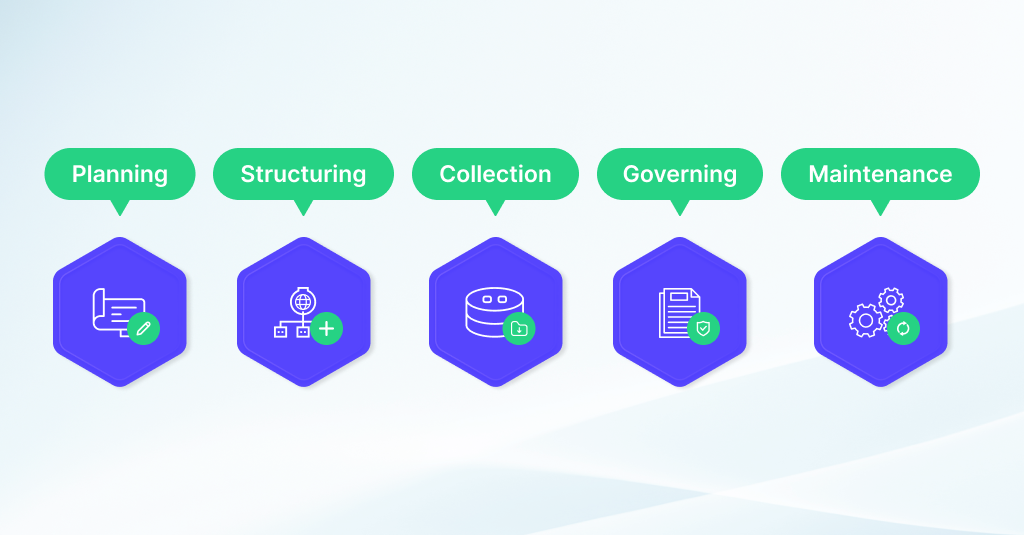What is Data Management?
Data management refers to the processes, practices, and policies organizations use to acquire, organize, store, secure, and utilize data effectively throughout its lifecycle. The goal of data management is to ensure that data is accurate, available, reliable, and accessible to authorized users while maintaining its integrity and security. This involves a systematic approach to handling data from its creation or acquisition to its eventual archival or deletion.

Key Components of Data Management
Data Governance: Establishing policies, standards, and procedures to ensure the proper management, quality, and security of data. This often involves assigning roles and responsibilities for data stewardship and compliance.
Data Quality: Ensuring that data is accurate, consistent, and conforms to defined standards. Data quality management involves activities such as data profiling, cleansing, and validation to identify and correct errors or inconsistencies.
Data Architecture: Designing and implementing a structure for organizing and storing data. This includes defining data models, databases, and data storage systems that support the organization’s needs.
Data Integration: Combining data from various sources to provide a unified view. Data integration may involve the use of Extract, Transform, Load (ETL) processes, data warehouses, and data lakes.
Data Security: Implementing measures to protect data from unauthorized access, disclosure, alteration, or destruction. This includes encryption, access controls, authentication, and other security measures.
Data Lifecycle Management: Managing data throughout its entire lifecycle, from creation to archival or deletion. This involves defining data retention policies, archival processes, and disposal procedures in compliance with regulatory requirements.
Metadata Management: Managing metadata, which provides information about the characteristics, origin, usage, and structure of data. Effective metadata management helps users understand and interpret the meaning of data.
Data Privacy and Compliance: Ensuring compliance with data protection regulations and privacy laws. This includes implementing measures to protect sensitive information and obtaining consent when necessary.
Data Cataloging and Discovery: Creating catalogs or inventories of available data assets, making it easier for users to discover and access relevant data for analysis or decision-making.
Data Analytics and Business Intelligence: Leveraging data for analysis and insights that can drive informed decision-making. This involves the use of tools and techniques for data analysis and visualization.
Conclusion
Effective data management is critical for organizations to derive value from their data assets, support business processes, and maintain a competitive edge. It involves a holistic approach that considers the people, processes, and technologies required to ensure the quality, integrity, and security of data throughout its lifecycle.







